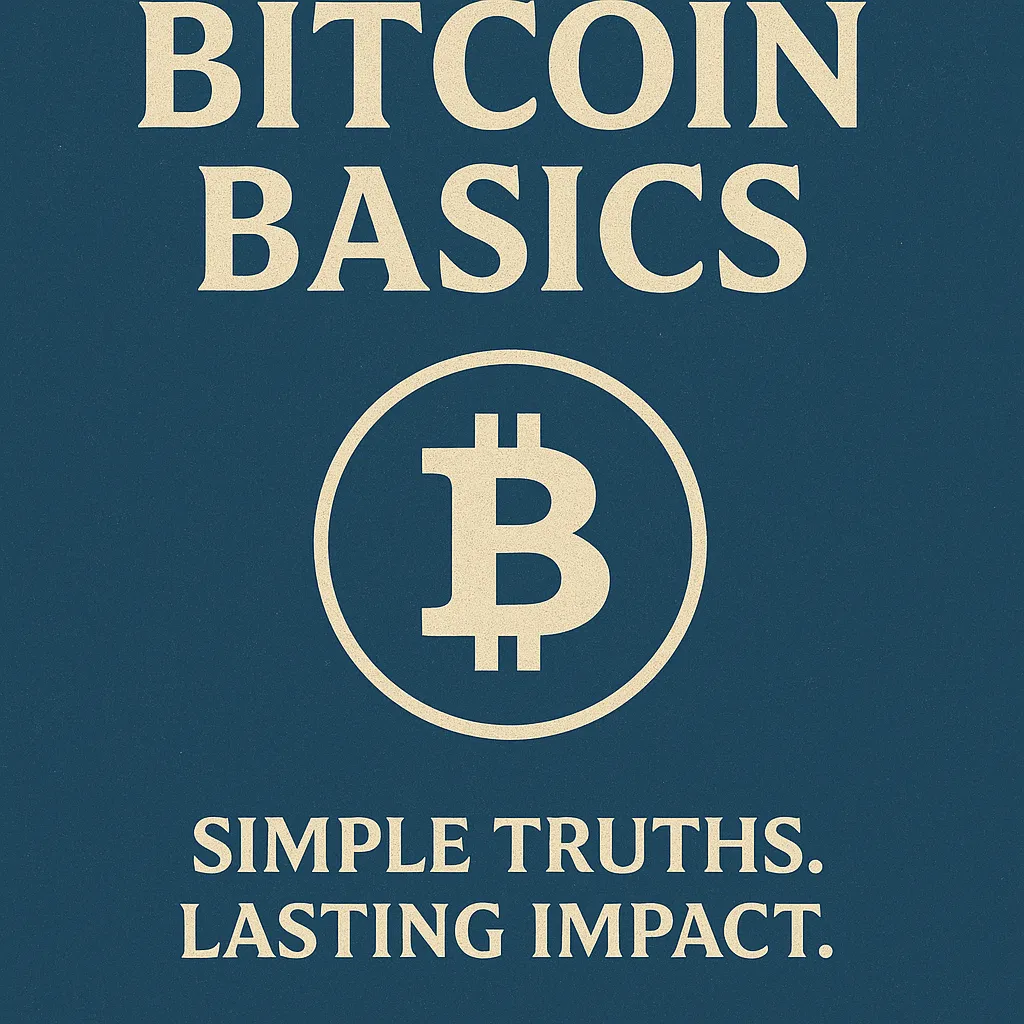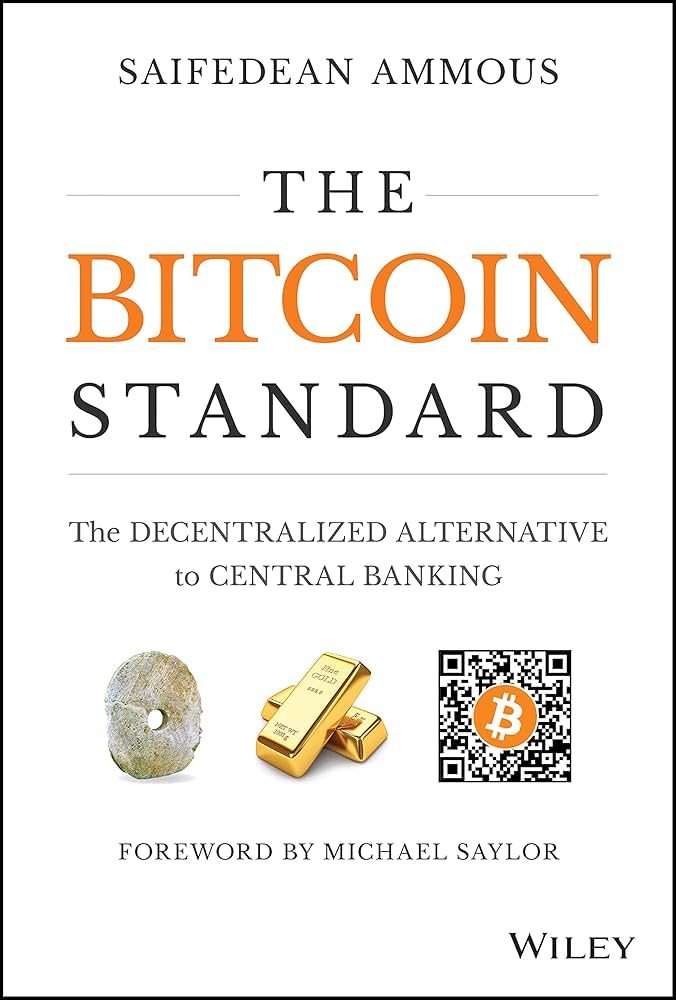START YOUR JOURNEY HERE IN
BITCOIN BASICS
START YOUR JOURNEY HERE IN
BITCOIN BASICS
New to Bitcoin? This page covers everything you need to know—from how it works to why it matters. Simple explanations, key concepts, and real-world use cases to help you build a strong foundation.

“Bitcoin is borderless, permissionless, and unstoppable — it shifts power from institutions to individuals.”
– Andreas M. Antonopoulos

“Bitcoin is borderless, permissionless, and unstoppable — it shifts power from institutions to individuals.”
– Andreas M. Antonopoulos
Featured

The Real Liquidity Engine Behind Bitcoin Section 3
Section 3: The Fed’s Role in Global Liquidity
The Federal Reserve is often portrayed as a national institution — a central bank managing domestic inflation, employment, and monetary stability. But in reality, it has become something much larger: the de facto central bank of the world.
Every tremor in global liquidity, every surge in offshore dollar credit, ultimately traces back to the Federal Reserve’s policy stance. When the Fed eases, liquidity gushes outward through the dollar system. When it tightens, the tide recedes, draining markets from São Paulo to Singapore — and yes, the Bitcoin markets too.
1. From National Bank to Global Backstop
The U.S. dollar’s role as the world’s reserve currency means that the Fed’s decisions ripple far beyond U.S. borders. Foreign banks hold trillions of dollar-denominated assets and liabilities, yet they cannot create base dollars. Only the Fed can.
In theory, offshore markets should be independent; in practice, they are structurally dependent on the Fed’s ability to provide emergency liquidity during stress events (McDowell, 2019) [1].
This transformation began long before Bitcoin existed. It dates back to the creation of the Federal Reserve swap lines during the 1960s, when the Fed first agreed to provide dollars to foreign central banks in exchange for their local currencies. The system grew sporadically but reached global scale during the 2008 financial crisis.
As one IMF report put it, “the Federal Reserve has effectively extended its lender-of-last-resort function to the world” (International Monetary Fund, 2021) [2].
2. The Swap Line Network
During the 2008 crisis, the Fed’s swap lines became the main artery for stabilizing offshore dollar funding. Through these facilities, the Fed lent hundreds of billions of dollars to foreign central banks, which then distributed the liquidity to their domestic institutions.
By late 2008, the network covered major monetary authorities including the European Central Bank, the Bank of England, the Bank of Japan, and the Swiss National Bank. The total outstanding swap line balance peaked above $580 billion (Federal Reserve, 2020) [3].
The result was clear: the Fed had become the global backstop for the dollar system. When offshore markets froze, the world looked to Washington, not Basel, for salvation.
In March 2020, the COVID-19 panic forced the Fed to reopen and expand these swap lines again, adding temporary arrangements with nine additional central banks. Within weeks, dollar funding costs normalized and global asset prices stabilized (McCauley & Sushko, 2021) [4].
The lesson: global dollar liquidity depends on the Fed’s willingness to act as lender of last resort — even to non-U.S. institutions.
3. Quantitative Easing and the “Liquidity Wave”
Beyond swap lines, the Fed’s most powerful global tool is quantitative easing (QE) — the large-scale purchase of Treasury and mortgage securities.
Although QE is designed to influence domestic interest rates, it indirectly creates a global liquidity wave. When the Fed buys securities, it injects reserves into the U.S. banking system, driving down yields. Global investors then search for higher returns elsewhere, pouring capital into risk assets and emerging markets (Rey, 2016) [5].
This portfolio-rebalancing effect expands offshore dollar credit. Banks, hedge funds, and stablecoin issuers suddenly find dollar funding cheap and abundant. The dollar weakens, commodities rise, equities surge — and Bitcoin often rallies in tandem.
Empirical work by the Bank for International Settlements shows that each QE phase corresponded to measurable increases in global dollar lending and cross-border risk appetite (BIS, 2022) [6].
The dynamic is reflexive: the Fed’s easing lowers volatility, encourages leverage, and inflates asset prices; tightening reverses all three.
4. Quantitative Tightening and Global Stress
When the Fed reverses course — raising rates or shrinking its balance sheet — the liquidity tide turns.
Higher U.S. yields attract capital back onshore, making offshore dollar funding more expensive. This phenomenon, known as the global dollar squeeze, compresses risk assets worldwide (Shin, 2016) [7].
Emerging markets feel it first: local currencies weaken, capital outflows accelerate, and sovereign borrowing costs rise. But Bitcoin, as a globally traded asset denominated in dollars, is not immune. Its price tends to correlate inversely with the dollar index (DXY). When the dollar strengthens, Bitcoin often falls (Alden, 2022) [8].
This is not because the Fed targets crypto markets; it’s because the same liquidity that fuels offshore leverage also fuels digital-asset speculation.
For example, between 2021 and 2022 the Fed raised rates from near zero to 5 percent and began quantitative tightening. Global M2 growth slowed sharply, stablecoin issuance contracted, and Bitcoin’s market capitalization declined by over 70 percent.
In short: when the Fed drains liquidity, Bitcoin bleeds.
5. The “Dollar Smile” and Bitcoin’s Reflexivity
Macro strategists often describe global liquidity in terms of the Dollar Smile — the idea that the dollar strengthens during both crises and U.S. booms, but weakens during synchronized global expansions.
Bitcoin’s behavior fits neatly into this pattern.
During crises, investors flee to safety — dollar demand spikes, and Bitcoin drops with other risk assets.
During global expansions driven by Fed easing or fiscal stimulus, the dollar weakens, liquidity surges, and Bitcoin rallies as a speculative asset.
During U.S. outperformance, the dollar strengthens again, tightening global credit and pushing Bitcoin lower.
Thus, Bitcoin is effectively a leveraged expression of global liquidity conditions set by the Fed. It’s not a coincidence that Bitcoin’s greatest bull runs — 2013, 2017, 2020 – 2021 — coincided with periods of abundant dollar liquidity and negative real yields (Coinbase Institutional Research, 2023) [9].
6. The Fed’s Dilemma
The Fed faces a paradox. As the issuer of the world’s reserve currency, its domestic policy choices have global spillovers it cannot fully control.
Tighten too much, and offshore markets seize. Ease too much, and speculative bubbles inflate worldwide — from real estate to meme stocks to Bitcoin.
The 2020–2021 cycle epitomized this dilemma. Faced with pandemic deflation, the Fed unleashed unprecedented liquidity: its balance sheet expanded by $4.5 trillion in a single year. The S&P 500 hit record highs, emerging markets boomed, and Bitcoin surged from $4,000 to $69,000.
But once inflation appeared, the Fed pivoted to the sharpest tightening in four decades. The dollar index soared, risk assets collapsed, and Bitcoin’s price fell below $16,000 by late 2022 (Bloomberg Markets, 2023) [10].
This pattern reveals a fundamental truth: Bitcoin is not insulated from the fiat system; it is a barometer of its extremes.
7. Bitcoin as a Shadow Gauge of the Fed
For macro analysts, Bitcoin has become a useful gauge of marginal liquidity — the incremental dollar available for risk taking.
Because it trades 24/7, across borders, without capital controls, Bitcoin reflects changes in liquidity faster than traditional indicators like credit spreads or emerging-market ETFs.
Lyn Alden calls it “the global liquidity barometer” — a real-time measure of how loose or tight dollar conditions are (Alden, 2022) [8].
When swap-line usage is high, QE is active, and real yields are negative, Bitcoin tends to lead upward. When swap-lines wind down, QT accelerates, and real yields rise, Bitcoin leads downward.
In this sense, Bitcoin has become a mirror of the Fed’s invisible balance-sheet policy, oscillating in rhythm with every pulse of global liquidity.
8. Why This Matters for the Future
Understanding the Fed’s role is essential for understanding Bitcoin’s cycles.
While Bitcoin’s monetary rules are fixed — 21 million coins, halving every four years — its market value still floats on a sea of fiat liquidity controlled by a single institution.
Every expansion or contraction in that liquidity — whether through QE, QT, or swap-line operations — reverberates across the crypto ecosystem.
As long as the world’s base collateral is the U.S. dollar, Bitcoin will remain tethered to the Fed’s policies. But over time, as Bitcoin matures and integrates into financial markets as collateral itself, it may begin to influence — not merely mirror — global liquidity.
That transition, from reactive to generative asset, will define the next era of monetary evolution.
In the final section, we’ll explore that future: why Bitcoin’s neutrality and proof-based structure make it the logical successor to today’s fragile trust-based system of global money.
Shout-out
For more in-depth macro and Bitcoin analysis, visit BullishBTC.com.
References (APA 7th Edition)
McDowell, D. (2019). Brother, can you spare a billion? The United States, the IMF, and the international lender of last resort. Oxford University Press.
International Monetary Fund. (2021). The global financial safety net: Where do we stand? IMF Policy Paper 21/005. https://www.imf.org/en/Publications/Policy-Papers/Issues/2021/03/30/The-Global-Financial-Safety-Net-Where-Do-We-Stand-50240
Federal Reserve. (2020). U.S. dollar liquidity swap lines and FIMA repo facility. Board of Governors of the Federal Reserve System. https://www.federalreserve.gov/monetarypolicy/central-bank-liquidity-swaps.htm
McCauley, R. N., & Sushko, V. (2021). Dollar funding of non-US banks through COVID-19. BIS Quarterly Review (September 2021). https://www.bis.org/publ/qtrpdf/r_qt2109b.pdf
Rey, H. (2016). International channels of transmission of monetary policy and the global financial cycle. Annual Economic Review, 106(1), 61-77. https://doi.org/10.1257/aer.p20161042
Bank for International Settlements. (2022). Global liquidity: Drivers, trends and risks. BIS Annual Economic Report. https://www.bis.org/publ/arpdf/ar2022e4.htm
Shin, H. S. (2016). Global liquidity and procyclicality. Bank for International Settlements Working Paper No. 720. https://www.bis.org/publ/work720.htm
Alden, L. (2022). Bitcoin: A global liquidity barometer. LynAlden.com. https://www.lynalden.com/bitcoin-a-global-liquidity-barometer
Coinbase Institutional Research. (2023). Bitcoin at a macro crossroads: Liquidity and risk cycles. https://www.coinbase.com/institutional/research-insights/research/market-intelligence/bitcoin-liquidity-and-macro-crossroads
Bloomberg Markets. (2023). The Fed’s fastest tightening cycle in 40 years. https://www.bloomberg.com/news/articles/2023-01-12/fed-tightening-cycle-and-markets
Bitcoin for Beginners: Bitcoin Explained in Simple Terms
Bitcoin explained and made simple
Bitcoin Cryptocurrency For Beginners 2025
Bitcoin for Beginners: Bitcoin Explained in Simple Terms
Bitcoin explained and made simple
Bitcoin Cryptocurrency For Beginners 2025
Bitcoin for Beginners: Bitcoin Explained in Simple Terms
Bitcoin explained and made simple
Bitcoin Cryptocurrency For Beginners 2025
Beginners Guide Part 2/3 - What is Bitcoin?
How Bitcoin Works in 5 Minutes (Technical)
Bitcoin 101 |
Balaji Srinivasan
But how does bitcoin actually work?
How Bitcoin Works Under the Hood
OUR GOAL
Our goal is to educate others on the value of owning Bitcoin from both a financial and humanitarian perspective.
QUICK LINKS
© 2025, BullishBTC. All rights reserved.









